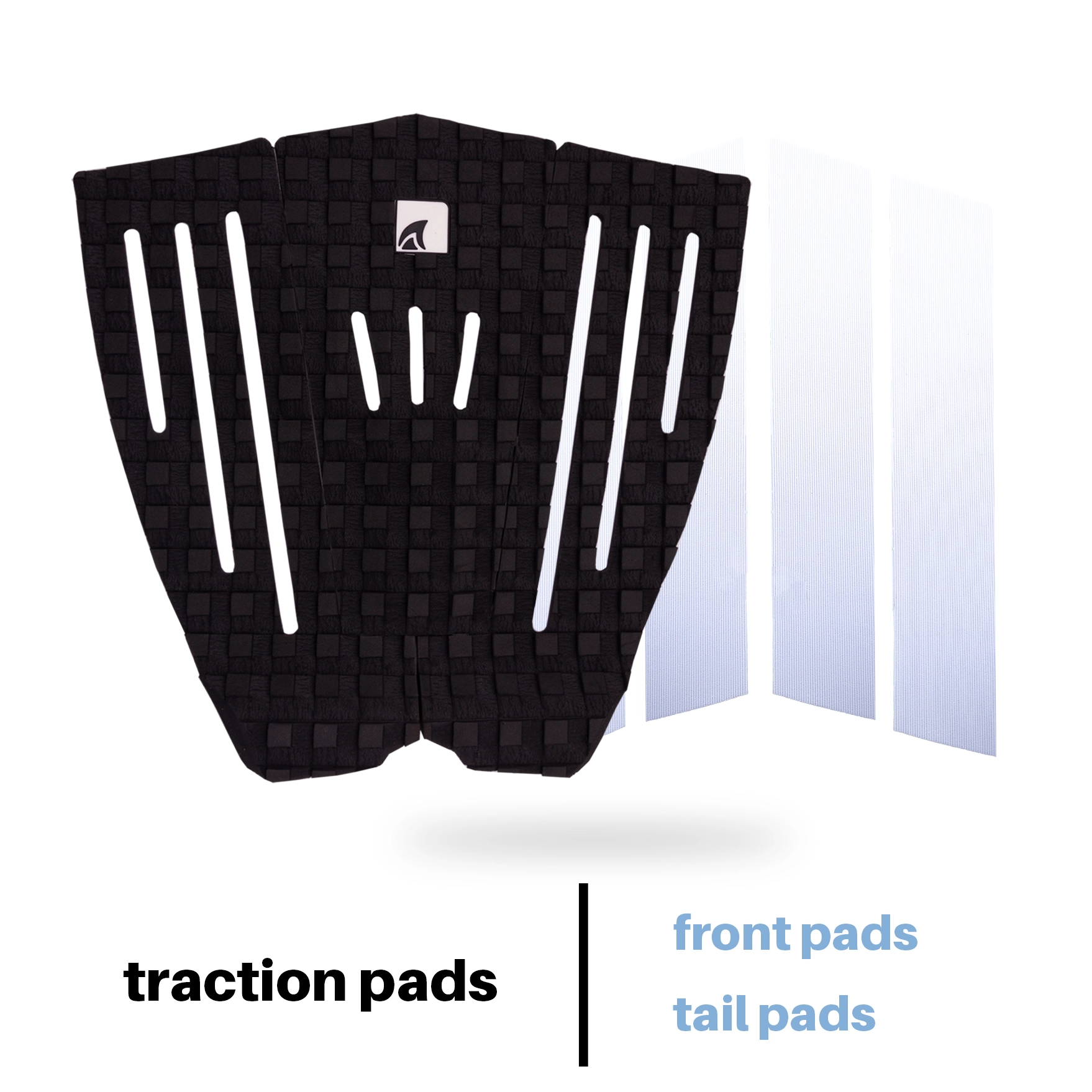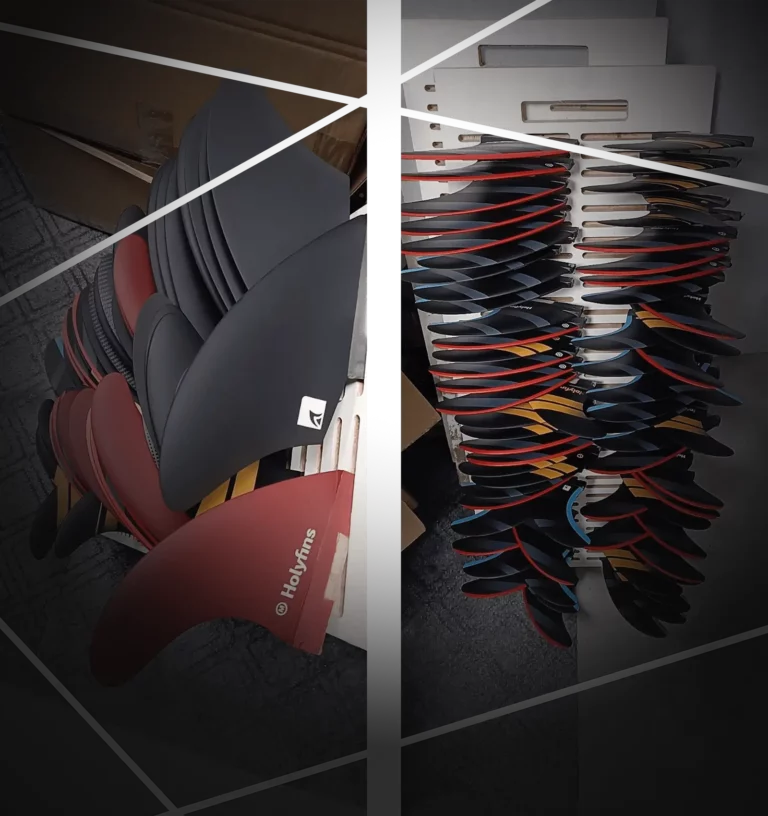Competitive and professional surfing can appear to be surprisingly, complex. In this article, we’ll quickly dive into it’s evolution, the organizations governing it, and the rules that shape the sport. The goal is to give you a general snapshot of how things are in 2024 for competitive surfing and particularly it’s professional part.
What’s the organizations behind it
The World Surf League (WSL), formerly known as the Association of Surfing Professionals, stands as the fourth iteration of a governing body for the world surfing championships. Even though, we can track the first international surfing competition to the early 50’s in Hawaii there have been only 4 true organizations since then that offered a professional competitive tour.
While the International Surfing Association (ISA) remains influential, the WSL has clearly taken the forefront since 1983. Nevertheless, the ISA has strong ties to national surfing associations, and holds a significant position with the International Olympic Committee (IOC), as surfing became an Olympic sport in 2019.
Today the principal surfing competitions (professional and non-professional) are from four main organizations: the two older ones (including the ISA), the WSL, and the Olympic Games.
Nevertheless, at a professional level, only the WSL tournaments are widely viewed and considered as crowning the “real” world champions, as the organization undoubtedly holds the most competitive lineups.
The WSL hosts various professional tournaments, such as the junior tour, longboard tour, masters, big wave events, and more. However, the most widely viewed one is the Championship Tour, commonly called the CT, which stands as surfing’s main league.
Explaining every rule and aspect of this tournament can get super complicated, as the WSL’s main rulebook contains no fewer than 120 pages. We’ll make an attempt to simplify it for you, and the gist of it is as follows…
The Route to Become the World Surfing Champion
Basically, surfers competing to be the best surfer in the world are separated into two “leagues“: the CT (Championship Tour), the main tournament, and the CS (Challenger Series) plus QS (Qualifier Series), constituting the second division.
The big difference between a Challenger Series event and a Qualifier Series event (the second-tier comps) is how they give out points. A Challenger Series event hands out more points (you gotta shine in your region to get picked) for the global QS leaderboard that surfers aim to climb, unlike a regular QS event. Otherwise, like the Challenger Series events, QS events are held worldwide, and points are awarded based on the competitiveness of the event, as some are easier to win than others. Once at the top of this division, the Championship Tour is opening its door to the best surfers of the year.
The road to the top is long, typically taking years for surfers to ascend from the Qualifier Series to the top of the CT.
Diving into the Championship Tour (CT) – The Elite League
The CT comprises nine global events, culminating in a additional special final event at Trestles, California. Starting with 36 surfers, a mid-season cut depending on the general ranking reduces the number of competitors to 24 for the remaining season.
Qualification for the initial 36 surfers involves being in the top 22 of the previous year’s general ranking tour or the top 10 of the Qualifier Series. Additionally, the World Surf League also selects 2 WSL wildcards that get to participate in the complete tournament but earn points only for the first half of the season. Unless your name is Kelly Slater and the WSL slightly changes the rules to allow only former winners and now WSL wildcards to be eligible to receive points in the second half, just like any other non-wildcard competitor.
Note: Some surfers, commonly named wildcards, receive event wildcards. They do not compete for the general tournament but participate in one event for both the fame and prize pool of the event only. Yes, it’s a super confusing way to name them…
Each of the 9 event locations is chosen and selected before the season even starts, scheduled between 2 dates. The organizer (WSL) then chooses the precise date to be held within this window by looking at the surf forecast a few days prior.
Each event is a mini-tournament in itself, involving qualifications to progress to quarters, semis, and finals. The winner receives 10,000 points for the ranking (as well as a hefty check), the second one gets 7,800 points, the third one 6,085 points, and so on.
The season concludes with the top five surfers of each gender competing in a final and ultime event determining the world champion. During it, the 4th and fifth surfers of the tournament go head-to-head. The winner of this first match then fights the third surfer on the list, and so on, until the best scorer of the general tournament goes head-to-head with one of the 4 surfers below who made it to him in this event. The winner of this last round is then declared as the champion of the tour and best surfer in the world.
Heat, Judging Rules, and the Competition Dynamics
So now you have an idea of how the general organization works. But what are the rules that concern the heat (round), how do you win yours, and what are the things you should and should not do during it?
What’s described below is more or less applicable in every professional tournament around the globe, from the Championship Tour (CT) to the Olympic Games.
Heats consist of 4 to 2 surfers, depending on the event tournament stage, with each heat lasting 30 minutes. A panel of Judges scores each ride from 1 to 10. The best and worst scores given by the judges are eliminated, and an average of the rest is made to determine the surfer’s ride score.
The judges base their scores on five major criteria:
The heat winner is determined by its two-best ride score.
To avoid global mayhem and surfers jumping together on every wave to obtain the two best scores, a priority system exists. It’s derived from the soft rules observed (more or less) at virtually every surf spot around the world.
The right of way is given to the surfer closest to the whitewash (where the wave is breaking), meaning the surfer most inside the wave has priority and should not be interrupted by other competitors.
Competitive surfing also adds another rule: General priority. It’s given to the surfer who has not taken a wave or the last one to not take a wave.
For instance, if there are two surfers, A and B, and A takes the first wave of the heat, B will be given general priority. Surfer A can still take any waves but as soon as B commits to one wave independently of the right of way, A should not hinder the scoring potential of B’s ride. Once B took his wave, things changes, and A now has a single general priority wave, and B must not block A on the wave he chooses.
If one surfer blocks another under priority, they will receive an interference penalty, ranging from having one of their ride scores halved or deleted to a forced disqualification.
Therefore, surfers need to strategize and choose between getting on few but better waves with higher score potential or by going on every unwanted wave to score a maximum number of waves.
That’s the basics of surfing rules; there are many more depending on these fundamental principles, but going too deep into them isn’t necessary for the average viewer (and our sanity). However, it’s interesting to note some peculiar rules exist in the WSL rulebook, like fines for breaking a competitor’s board in the locker room, ripping up your result sheets, or entering the judging area to protest.
We can just wonder why they exist.
WSL CT prize pool
If you are curious about how much surfers earn, you can have a glimpse at the event prize pool below. It’s important to know that direct earnings from the WSL obliviously constitute only a partial amount seen on their yearly revenue as sponsors tend to come with much more pocket money.
Still, for the CT events in 2024, the prize pools are as follows for both men and women:
Before the Cut:
| Place | earnings |
| 1 | $80,000 |
| 2 | $50,000 |
| 3-4 | $32,000 |
| 5-8 | $21,500 |
| 9-16 | $16,000 |
| 17-32 | $14,360 |
| 33-36 | $13,525 |
After the Half-Season Break and Qualification to the Second Half:
| Place | earnings |
| 1 | $100,000 |
| 2 | $63,000 |
| 3-4 | $40,000 |
| 5-8 | $20,000 |
| 9-18 | $13,500 |
| 17-24 | $12,000 |
For Those Reaching the Final:
| Place | earnings |
| 1 | $200,000 |
| 2 | $100,000 |
| 3 | $75,000 |
| 4 | $60,000 |
| 5 | $40,550 |
The Reality of Competitive Surfing Today – A Bit of Context
It’s important to know that professional competitions are primarily fueled by a passionate billionaire surf fan (and Kelly Slater’s manager and ventures partner) as competitive surfing, unfortunately, does not yet turn a profit.
Moreover, while the sport itself is not new, its competitive side is still evolving a lot as its rules, event locations, and surfing technology constantly undergo changes. Plus, the WSL is still looking for the perfect balance between bringing revenue and pleasing the fans.
For instance, In the past years, a lot of ink has been written about the introduction of wave pools in the scene or over how the final and world champions are and should be determined.
Additionally, as we said earlier the sport has welcomed new organizations and a new tournament with the Olympic Games and its Olympic Committees. Even if we still don’t know if surfing is going to be a more permanent thing there it already impacted the way professional surfing works and it’s bound to continue.
If you have any questions, feel free to let us know.
Do not hesitate to leave a comment down there.
If you need any surfing equipment, have a look at our performant and accessible Fins , Traction Pads, and Leashes, we deliver worldwide!










Leave a Reply